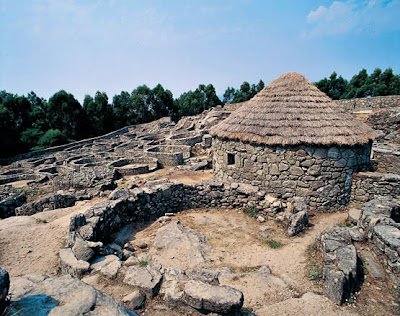 VOLVERE do not know when, but VOLVERE !
VOLVERE do not know when, but VOLVERE ! ENJOY!

 The first impression one gets to roam the streets of Santiago de Chile is the requirement to an orderly, modern city.
The first impression one gets to roam the streets of Santiago de Chile is the requirement to an orderly, modern city. 


it off the coast of la region (Coast of Death) is a series of shrines, most of Ello located in the most salient points Experiments show the Christianization of seniority places of worship are well pagano.Tenemos Pope Hadrian in Malpica, Santa Rosa, Slab, the Holy Spirit, on a camel; of Mount Virgin in Olhão, the Virgin of Barca, in Muxía, the Christ of Finisterra, San Marcos, Corcubiom; The Virgin of Xunqueira in Cee, and the Virgin of Remedios in Lira.Cada one of these saints and virgins Tien su leyenda, en la mayor who cases is about its origin.
The Legend of A Virxe da Barca is covered in several books, having several variations of each other. This is the extended version:
Apótol For the preaching of Santiago by the county after that through her intercession Duio City (Finisterre) is submerged, disappearing all its inhabitants, as punishment for the preaching of the Apostle ignore and worship the sun, he retired to the solitary muxiana coast, and there in A Xaviña tip, stopped to pray and plead with the Lord intended that people should cease their hostilities against his preaching.
Suddenly The Apostle saw a mysterious boat approached the shore, and she sees the Virgin full of beauty and majesty.
Lady gives encouragement to the Apostle and communicates the success of his preaching in our land, ordering him to return to Jerusalem, because his mission had cumplido.La boat reached by the Virgin to Punta de Xaviña A stone age , as well as the sail and rudder, there being desposit. The boat was Pedro de Abalar and sailing A two Cadrís.Cuenta Built the legend that the Virgin, as a token of love for the Apostle, donated a picture of him, whom Santiago built an altar under the stones. In
A Costa da Morte is a series of places that remain legendary wealth can say that there are practicing some form of pagan worship. This pagan religion refers primarily to the worship of stones.
The Catholic Church's attempts to destroy the pagan cults were many, however, despite the prohibitions imposed on councils, sermons or threats of excommunication, were not able to finish in a definitive manner with these creencias.Viendo the little had the effect of prohibitions, the church chose to Christianity, giving him a Christian version of everything that had an origin pagano.Existen in A Costa da Morte many stones that were or still are, subject culto.El type of stones in this coastal region are or were related to the pagan cults are varied.
One of the things that shows the strength of these ancient deities is the interest that the Catholic Church began to Christianize these places, which gave rise to shrines as important as Christ Virxe Fisterra or stone Muxía.La da Barca for the primitive, was a symbol of the stability, unlike other elements of nature are subject to change.
- abalar stones denote divining beliefs or performance of any promise. A Pedra de Abalar of Muxía is, in all, the best known.
There is a popular belief that says that the stone abala when you want, and when it does portend disaster.
They say that in the middle of last century, some thieves tried to steal from the shrine and stone abalone alone ahuyentándolos.Antiguamente was believed that people who moved the stone had to be free of sin because, otherwise no Abal. The pilgrims who come to this shrine are stone abalar pretense, playing his movement as a willingness of the Virgin to grant what is asked.


